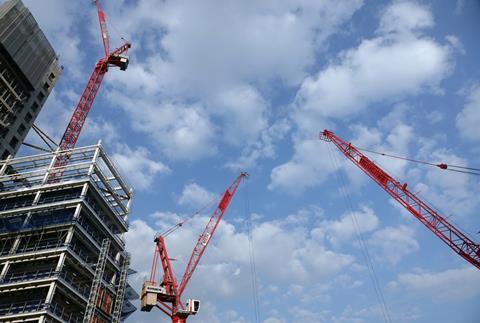Client decisions on work taking longer as PMI data records another fall in monthly output
The threat of firms bidding jobs at rock bottom prices to fill gaps in order books has been raised after a bellwether index said subcontractor prices had fallen for the first time in over three years.
The S&P Global/CIPS UK construction Purchasing Managers’ Index (PMI) said prices subcontractors were charging had headed south for the first time since July 2020.
CIPS chief economist John Glen said: “More subcontractors are available for work and some are reducing their prices in reaction to the falling demand.”

Survey respondents said there was a lack of tender opportunities while decision-making among clients was taking longer due to concerns about the broader economic outlook.
Optimism in October was at its lowest ebb this year, the survey said, and Toby Banfield, financial restructuring partner at PwC, admitted: “The drop in optimism may not be surprising, given there have been a number of high profile insolvencies across the sector in recent months. This can significantly impact developers who need to find alternative contractors to complete projects, normally at a substantially higher cost than envisaged in the original design and procurement phase.”
And Max Jones, director in Lloyds Bank’s infrastructure and construction team, said: “Contractors we speak to are mindful of risks building up across their supply chains. The concern is that contracts priced as the country was coming out of the pandemic have had their margins eroded by inflation.”
Brian Smith, head of cost management and commercial at Aecom, added: “Our data suggests the rate tender price inflation and material costs have eased to lower levels, but wages continue to rise at around five per cent. Many firms have also yet to fully refinance their operations at new interest rates which will undoubtedly put pressure on working capital.”
Last month’s index improved only marginally to 45.6 from September’s 45.0, which was the lowest reading since May 2020 when the UK was in a covid lockdown.
The reading was well below the 50 growth threshold with housebuilding posting a score of 38.5, slightly up from the 38.1 recorded in September.
Civil engineering also fell to 43.7 from 45.7 but commercial work rose from 47.7 to 49.5 although still below the 50 no change mark.
Glen said: “High interest rates and low consumer demand for new homes continue to drag down the UK construction sector, with a lack of new tender opportunities and a cutback of existing projects being reported across the house building industry.”

























No comments yet